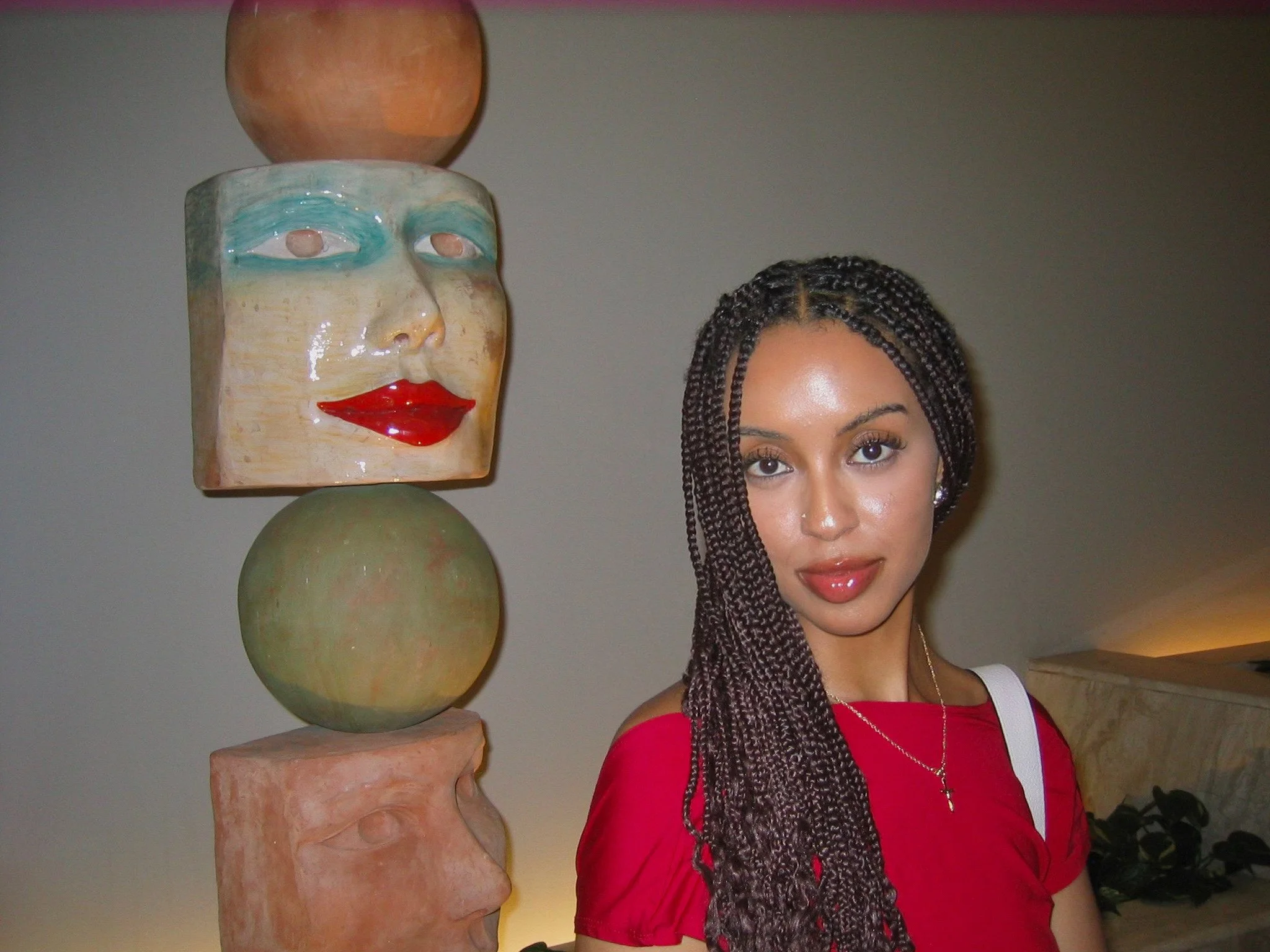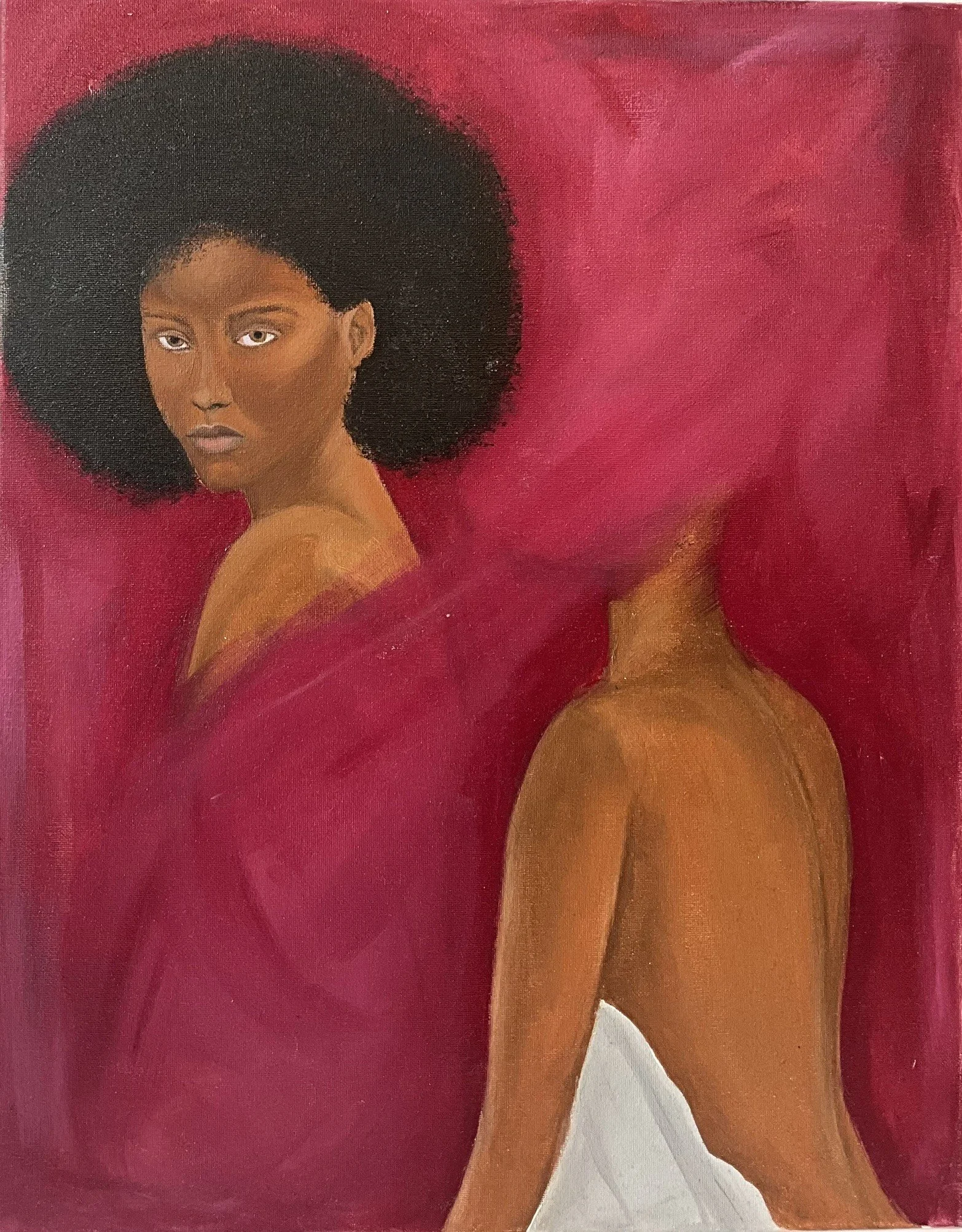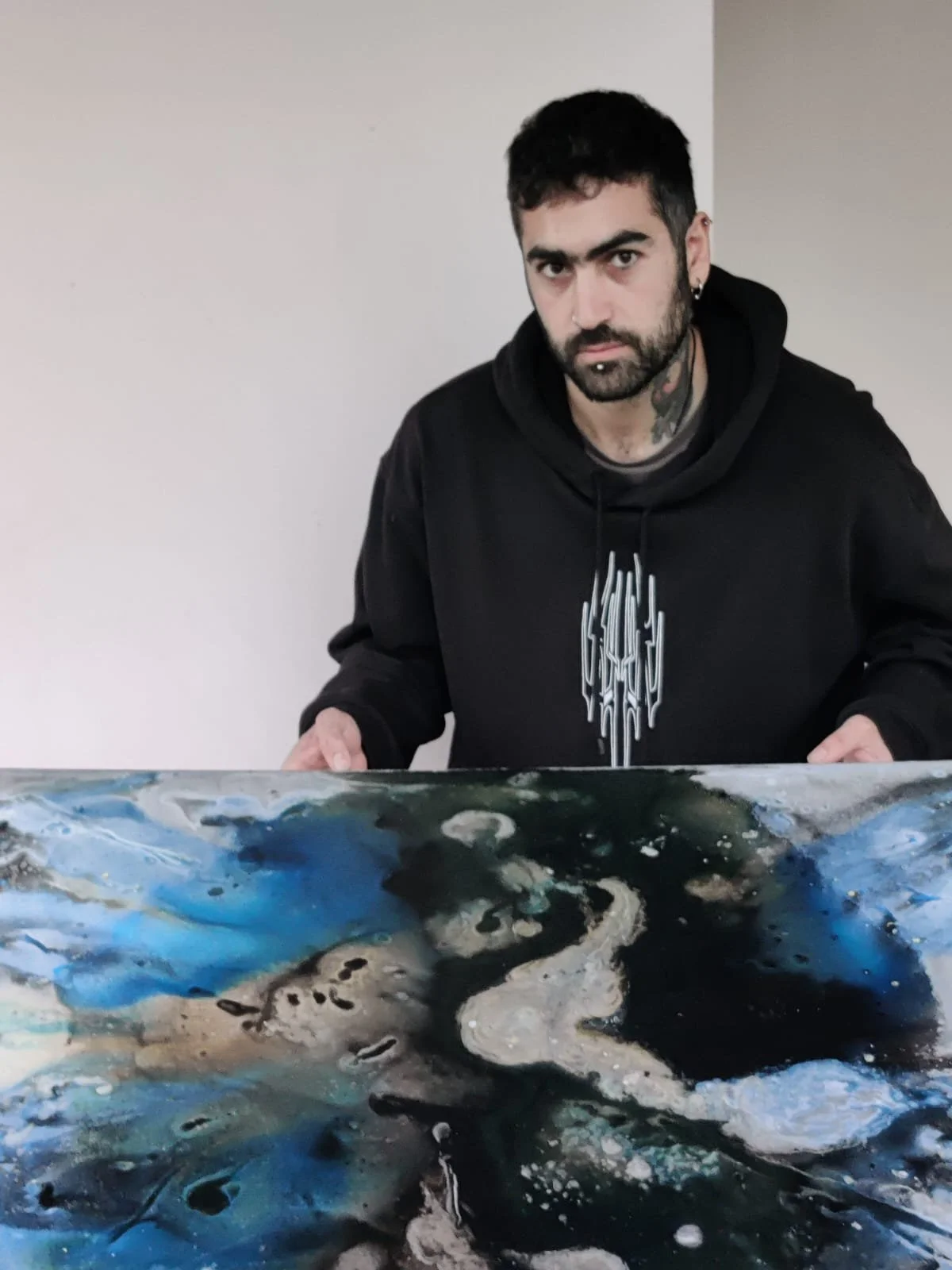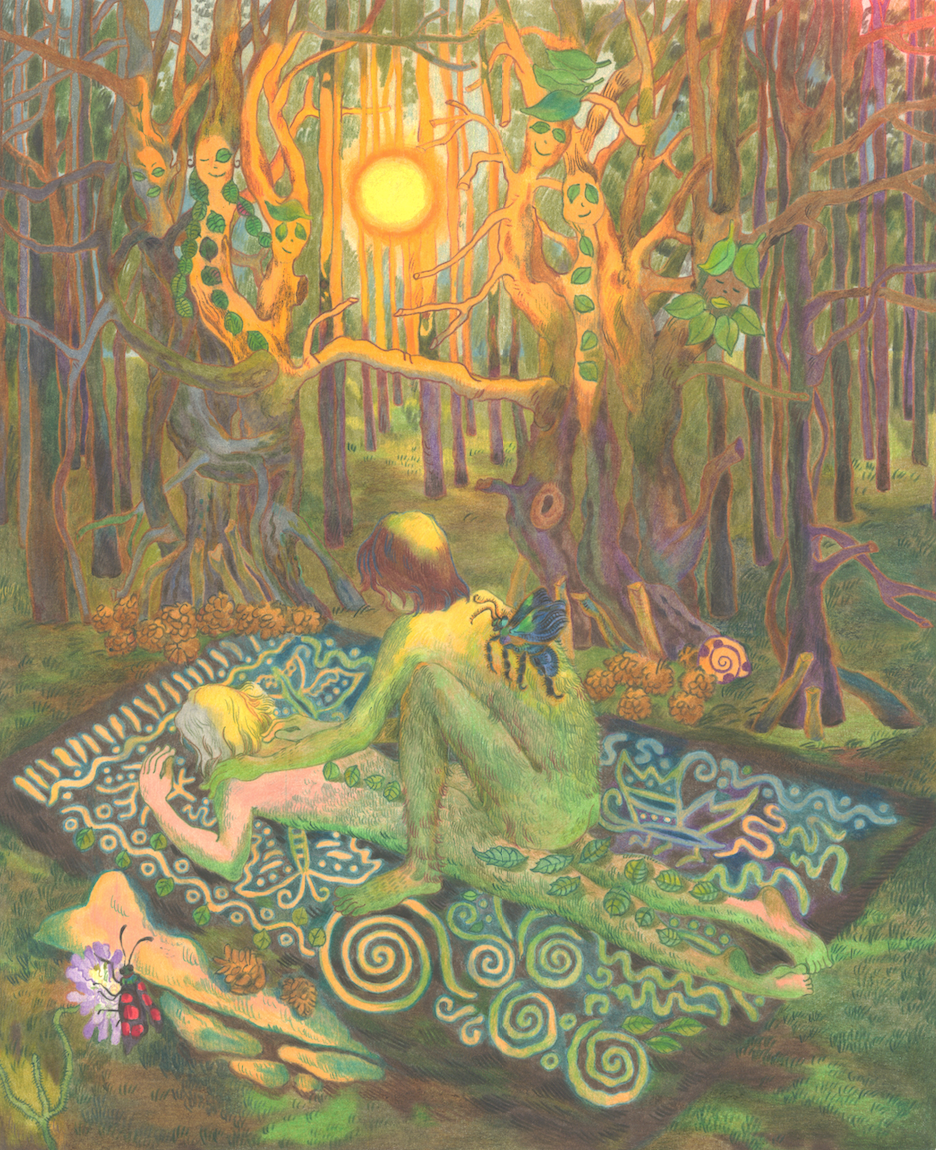INTERVIEW | Tseday Girma
10 Questions with Tseday Girma
Tseday, an artist born and raised in Ethiopia, weaves the essence of her homeland into her work. Through her paintings, she celebrates Ethiopia's rich history and culture, making sure they are a tribute to the land that shaped her. Currently pursuing a Master's degree in Architecture at Howard University in the United States, Tseday strives to harmonize her passions for art and architecture.
Although art is her first love, architecture stands as a close companion, influencing her artistic process and vision. Despite having no formal training in art, Tseday found it to be an innate language, one that spoke to her from a young age. As soon as she could pick up a pencil, she began a lifelong journey of artistic exploration. Her father, her first mentor and an art enthusiast, played a vital role in shaping her artistic journey. He inspired and challenged her, teaching her to sketch and paint while instilling in her a deep appreciation for the arts.
Tseday aspires to follow in the footsteps of the great African artists who came before her, working to redefine Ethiopian contemporary abstract art. Her ultimate goal is to grow as an artist and make it her full-time profession, crafting a legacy that bridges the traditions of her heritage with a modern perspective.
Tseday Girma - Portrait
ARTIST STATEMENT
Tseday's cultural heritage anchors her artistic vision. As an artist born and raised in Ethiopia, she explores human emotions through the lens of African motifs, encouraging viewers to find reflections of themselves in her work. Her creative process is not merely about creation but dialogue—an ongoing exploration of identity and belonging. Through the use of contemporary interpretations of Ethiopian symbols and the expressive body language of her figures, she tells stories that communicate emotions often beyond the reach of words.
Netsa, Oil, 24x35 in, 2024 © Tseday Girma
INTERVIEW
Can you share some of your earliest memories of creating art and how your father influenced your artistic journey?
My earliest memory of creating art was in kindergarten. I remember enjoying the coloring exercises we had in class, especially because I could conjure up images of animals that didn't exist in reality. I fell in love with creating art after that starting point, and I'll always remember the creative freedom it introduced me to. During the summers, my father and I would sit for hours sketching the plants in our backyard or learning to paint the pile of fruits on the dining table. During these hours, he taught me everything, from how to hold my pencil when I sketch to color theory and how to paint still life.I'd say he really taught me the technical aspect of art, but beyond that, he's always educating me about different artists, their movements, and their techniques. I find that he was the first person to really push and challenge my perception of my art, and it's constantly helping me evolve.
How has your study of architecture influenced your artistic practice and perspective?
I think before I started studying Architecture, I thought of my art as more 2-Dimensional. Through studying Architecture, I learned about the symbiotic relationship a building has with its inhabitants, space, and form. Only after learning this, was I able to view my paintings as 3-Dimensional. I began to challenge the relationship between form, space, and the figures on the canvas, which allowed my art to progress.
Untitled, Oil, 15x19 in, 2023 © Tseday Girma
Can you tell us about the process of creating your work? What is your artistic routine when working?
I usually decide to start painting after 1 pm because I love the flood of natural light that comes in the afternoon. I put on some music, and the type of music always changes with the phase of life I'm in. Right now I've been listening to a lot of House music and Ethiopian jazz; I attribute the latter to my recent visit to Ethiopia. I sit in my art corner, consisting of my cart piled with paints and brushes, next to my easel and start painting outlines on my primed canvas. Usually, I have a sketch of what I'm thinking of painting, but I let the paints dictate the outcome of the piece. When I start painting, I'm completely immersed in my process, and hours feel like mere minutes. Blocking out colors with my oil paints is usually my favorite part because the mystery and anticipation of the piece linger in the air. I eat in between and I wrap up before nightfall, as my father's voice telling me that artificial light distorts your perception of color rings in my head. However I continue brainstorming ideas and doing pencil sketching any time of day.
You describe your creative process as an ongoing dialogue. How do you hope viewers engage with your work, and what kind of conversations do you want to inspire?
I hope that through the figures on my canvas, I aim to articulate emotions that words alone cannot convey—emotions that are deeply personal yet resonate with others universally. By studying and interpreting African iconography and symbols, I reinterpret their meanings to create a language that reflects my own inner journey. My hope is that viewers can see their own unspoken feelings mirrored in these works. I hope to inspire conversations about the history, art, and symbolism of my country, of the African continent and of my generation.
Cultural Identity, Acrylic, 8.5 x 8.5 in 2024 © Tseday Girma
Disassociation, Oil, 15 x 19 in, 2023 © Tseday Girma
What inspired you to pursue abstract art, and how do you see your work contributing to the evolution of contemporary Ethiopian art?
I first encountered abstract art while working on one of my pieces. Initially, I had a clear vision for what I wanted the piece to be, but it naturally took on an abstract direction during the creative process. Through experimentation, I've realized that my work doesn't fit neatly into the abstract category—it feels more aligned with contemporary art.
My goal is to bring a fresh perspective to contemporary Ethiopian art, building on the foundations laid by the artists who came before me. I hope my work sparks dialogue and offers a mirror for those who resonate with its themes, creating a space for reflection and connection.
Speaking of your Ethiopian heritage, how does it shape your artistic vision and the stories you aim to tell through your work?
Growing up in Addis Ababa, Ethiopia, shaped my sense of identity. After moving to the US, I experienced a sense of longing. This was even more so when I went back to visit and saw that the city I grew up in had changed significantly in the past few years since my departure. I was so far away, so I could no longer look out my window and recognize the Addis I once knew. Through painting, I found a way to cope—a space where I could pour my feelings, symbols, and memories onto a canvas that seemed to understand me. My art became a vessel for processing this disconnection while remaining deeply rooted in my identity as an Ethiopian and an African.
Self, Oil, 15 x 19 in, 2024 © Tseday Girma
What mediums and techniques do you most enjoy using, and how do they help you express your artistic ideas?
I primarily enjoy working with oil paints and occasionally acrylic. Up until 2020, I was solely working with acrylic and sometimes watercolor medium. I was fascinated with acrylic because I was impressed by the amount of texture it allowed you to manipulate. As I started working with it over the years, though, I craved the buttery blending and consistency that oil painting has, so I picked up oil and taught myself how to paint with it through long hours of YouTube tutorial videos. I knew after my first oil piece–a Martin Luther King portrait—that I had found my medium. I've been using it ever since, and it really helps birth and complete my pieces. I think the process of priming the canvas and endless layers allows the transformation of my work from an idea to a tangible expression of emotion and meaning.
Who are some African artists who inspire you, and how do you hope to build a legacy that bridges tradition and modernity?
I would say some African artists who heavily inspire me are Skunder Boghossian, Wosene Worke Kosrof, and Ibrahim El Salahi. I really admire the first two artists due to their ability to abstract and deconstruct Ethiopian motifs and symbols in their art. I was really in awe of Boghossian's work for a while and, as a Howard University student, envied those who had the opportunity to study under him while he was a professor at Howard from 1972 to 2001. I was fascinated by his ability to create dreamlike paintings that included African motifs as well as Ethiopian Orthodox symbols. His work beautifully expressed what it meant to be African in his time. One thing I take away from all three artists is their homes strongly shaped their identities and works, even long after they migrated abroad. You can see Sudan in El Salahi's work through the calligraphy or the contemporary faces, their motherland is an integral part of their work.
I hope to be able to create art that uses a representation of traditional religious manuscripts to describe modern emotions we experience day to day. While paying homage to the church, I hope my art can challenge these manuscripts to open a gateway for exploration.
Love, Death and the in-between, Ink, 8.5 x 8.5 in, 2024 © Tseday Girma
What are you currently working on, and what are your long-term aspirations as an artist?
I'm currently working on my body of work, 'Echoes of Self.' My earlier piece, 'Netsa,' it's an exploration of deeply personal emotions I've felt during my time away from home. This body of work is inspired by the rich tradition of Ethiopian Orthodox Tewahedo Church manuscripts. By reimagining the canvas as a contemporary manuscript, I find a profound connection between this sacred art form and my emotional expression. My long-term goal is to hopefully be a full-time artist when the time is right. I'd love to carve a career that blends architecture and art.
And lastly, what are your plans for 2025? Do you have any upcoming projects or exhibitions you would like to share with our readers?
I plan to have a couple of exhibitions this year with my finalized body of work, 'Echoes of Self.' By studying and interpreting African iconography and symbols, I reinterpret their meanings to create a language that reflects my journey.
Artist’s Talk
Al-Tiba9 Interviews is a promotional platform for artists to articulate their vision and engage them with our diverse readership through a published art dialogue. The artists are interviewed by Mohamed Benhadj, the founder & curator of Al-Tiba9, to highlight their artistic careers and introduce them to the international contemporary art scene across our vast network of museums, galleries, art professionals, art dealers, collectors, and art lovers across the globe.





















